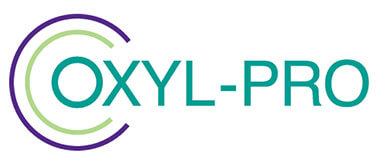Disinfection in Shipping

Cruise ships can be extremely contagious centres for the spread of diseases and infections. This is why ship sanitation continues to be a critical issue, even with increased hygiene on ships.
In the mid-1970s, there were several outbreaks of acute gastroenteritis onboard cruise ships, leading to significant improvements in sanitary practices on board American cruise ships.
More recent mass recordings gastroenteritis symptoms on cruise ships have been linked to norovirus, involving complex patterns of transmission.
Then there are the outbreaks of Covid-19 on cruise ships, and the implications these have for ship sanitation.
Ships need to follow clear and rigorous cleaning and disinfecting procedures and processes, which should include the use of a proven cruise ship disinfectant.
What are the Hygiene Risks Onboard Ships?
On 1 February 2020, one passenger who had disembarked from the Diamond Princess in Hong Kong tested positive for Covid-19. Over 700 people onboard the cruise ship became infected over the next month.
The most serious challenge onboard ships is from infectious diseases. As we have highlighted above, illnesses from viruses can spread rapidly and widely in the confined environment of a cruise ship.
Another element often present in cruise ships is an elderly population of passengers. This can accentuate the risk from the spread of infectious diseases.
Another source of illness on cruise ships is food poisoning. This can be down to poor hygiene standards in food preparation onboard, or from infected food supplies begin taken onto the ship.
The Food Safety (Ships and Aircraft) Order 2003 applies the same regulatory regime to ships as applies to food premises based on shore. This covers various aspects, such as management and stock control systems, food storage and preparation equipment, food temperature control and pest control.
Drinking water can be a source of disease and illness onboard cruise ships. This may be down to the integrity of a ship’s initial supply, or to water storage and distribution systems onboard a vessel.
Finally there is environmental hygiene on ships to consider. This covers a range of elements including facilities such as bathrooms, saunas, swimming pools and laundries.
For ships to stay as free from contagious diseases and potentially dangerous bacteria as possible, they need to follow clear procedures, and legal guidelines in hygiene legislation.
What is the Hygiene Legislation for Ships?
The legislation covering food safety on ships is the Food Safety (Ships and Aircraft) Order 2003 (see above).
There is also a Government consultation, Health Protection (Ships and Aircraft) Regulations for amending the Public Health (Control of Disease) Act 1984.
The aim has been to update the health protection and powers duties for use in England’s ports. The original port health regulations were made in 1979.
The regulations allow for risk assessments, including inspections of ships’ health measures, including disinfection and decontamination.
Since the Covid-19 global outbreak, the Government has issued guidance for shipping and sea ports.
In this guidance, it emphasises the importance of preventative measures, which include pre-boarding assessments of crew and passengers, use of PPE and face coverings, and the frequent cleaning and disinfection of objects and surfaces.
Another consideration for ships is what materials they use for cleaning, as there are regulations for the prevention of pollution from what ships discharge.
These come under MARPOL (the International Convention for the Prevention of Pollution from Ships). Annex 5 regulates the prevention of pollution by garbage from ships.
Suggested Procedures for Cleaning and Disinfecting
Since the pandemic, the whole issue of cleaning and disinfecting ships has become more prominent and urgent.
There are various recommendations from the EU’s Healthy Gateways joint action initiative.
It emphasises the importance of cleaning and disinfecting surfaces to help prevent transmission of diseases.
It recommends that all areas of a ship should be cleaned and disinfected, and that this should involve materials that are effective against viruses.
For this, the answer is to use antimicrobial agents, and to use them according to manufacturers’ instructions.
Along with routine, rigorous cleaning of toilet and washing facilities, there should be regular cleaning and disinfection of surfaces that people touch frequently. This includes doorknobs, chairs, armrests, table tops and light switches.
Waste management involves treating any infectious waste (from a cabin or area where someone has been infected) separately from normal waste, sealing it safely in plastic bags.
Food preparation areas need thorough disinfecting, as do food utensils.
Water supplies should be treated with a disinfectant that enables them to be safe for human consumption.
How and Where Can You Use Oxyl-Pro?
Oxyl-Pro is a highly effective disinfectant that is made using hydrogen peroxide stabilised by food-safe ingredients.
It is an ideal solution for use as a cruise ship disinfectant, as it has a variety of different applications:
- It is an effective water treatment for disinfecting ships’ water supplies, including removing biofilm from pipework
- Oxyl-Pro will clean and disinfect hard surfaces
- It can be used as a fogging disinfectant for rooms.
Oxyl-Pro is extremely effective against bacterial infections such as e-coli, salmonella, listeria and legionella.
There are no discharge restrictions for its onboard use, under MARPOL.
For more information about Oxyl-Pro, please complete our contact form, call us on +44 1606 851 782, or email enquiries@oxylpro.com
